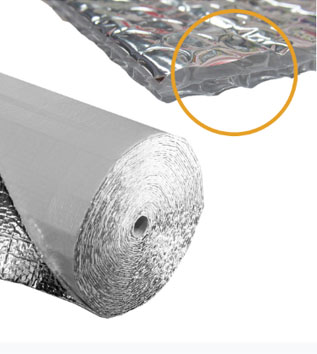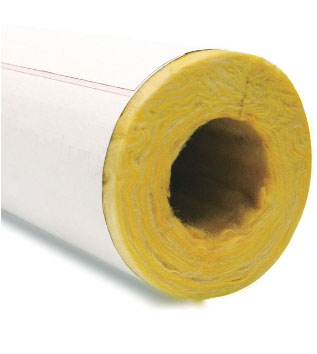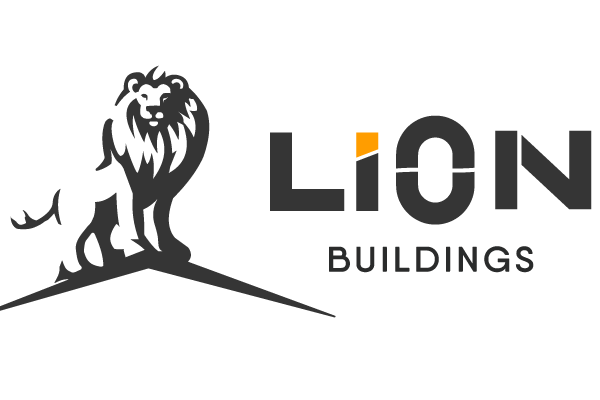Insulation Options
Whether you have a regular roof carport, A-frame carport or vertical roof carport, proper insulation is vital for comfort—especially if the area is utilized regularly. While galvanized steel metal roofing is highly resilient to the weather and elements, it is a highly conductive material. Essentially, this reaction is what causes cool weather to permeate the carport in winter and result in scorching summer temperatures. Insulation for metal carports is the best approach to blocking these heat transfers in addition to helping control condensation.
Why Do You Need Carport Insulation?
Unless you like being extra cool or boiling when using your carport for enjoyment, as a workspace, or however you choose, insulation for your metal carport is a must. Be sure to consult with your installer or custom metal building expert about which materials are best for your style and use of the area.
There are four primary insulation types for metal carports and similar structures Lion Buildings uses: Single Bubble, Double Bubble, 2” Fiberglass, and Prodex AD5

Single Bubble
This one layer of 1/8″ barrier bubble film is laminated between two layers of metalized film.
Single Bubble Foil Heat Insulation has a variety of uses, such as: to wrap hot water heaters, pipes, metal and commercial buildings, stud walls, roofing systems, basements and crawl spaces. When reflectivity and R-factors are required, it can be utilized as a vapor retardant.
Based on the type of installation, this heat insulation can be glued, stapled or taped if necessary.
- Clean, Lightweight, Easy to Install
- Class A / Class 1 Fire Rating
- Saves Energy and Money
- High Thermal R-Values
- Non-toxic/Non-carcinogenic
- Installation requires no special tools or clothing
- Does not promote the growth of fungi or bacteria
- Provides no nest support for rodent or insect pests
- Requires no maintenance
- Puncture and tear resistant
The product is most beneficial when radiation is the predominant means of heat transfer, for this reason it is used as insulation against radiant heat transfer. The insulating properties stem from the product’s bright aluminized film surface which occurs in two ways:
- It is an excellent reflector of all long wave radiant heat that strikes it – reflecting up to 98% of all radiant heat.
- When in close physical contact, it reradiates only 5% of heat; compared to other building materials, at the same temperature, which have approximately 90% reradiation.

Double Bubble
Air Bubble insulation has a core composed of air, and is composed of either one (single bubble) or two (double bubble) layers of air bubbles sandwiched between two metalized surfaces.
Double bubble insulation uses air bubbles between the reflective surfaces, provides a radiant barrier, a vapor barrier and insulation protection. Bubble insulation has an inner substance so it has better performance in insulation than the radiant barrier, can be used in a variety of residential and commercial applications to increase the thermal performance of
the building and to act as a vapor barrier. Bubble foil insulation is suitable for metal buildings, pole barns, homes, attics, roofs, walls, crawlspaces, garages and more, providing R-value, a radiant heat barrier and vapor barrier protection.
Double the bubbles for double the airspace. The more airspace in the product, the better it is at slowing heat transfer.
Double bubble insulation provides maximum efficiency. Key benefits of this foil-faced double bubble include:
- 1/4″ – 5/16″ nominal thickness of foil bubble insulation
- 99.9% Pure Aluminum bonded to tear-resistant polyethylene core and bubble wrap insulation
- Highly reflective foil facing
- Optional UV resistant polyethylene facing on one side, foil on the opposite side (foil double bubble white poly option)
- Reflective bubble insulation has a very low rate of emissivity
- Durable polyethylene bubbles make up the center bubble wrap insulation
- Acts as 100% vapor barrier
- Class A/Class 1 fire rating
- Foil-faced bubble wrap insulation makes an excellent thermal barrier
- Barrier for methane, radon, moisture, termites, and other pests

2” Fiberglass
Fiberglass is one of the most commonly known types of insulators that has been used for decades. Fiberglass insulation for metal carport roofing is effective, but not without its constraints. The most important factor in long-lasting heat and cooling resistance with these types of materials is choosing fiberglass that is specially designed for use with steel buildings. Fiberglass crafted for metal installations is made of long fiberglass strands that are woven and laminated on one side to establish a vapor-barrier facing.
Fiberglass basically operates as a form of open cell insulation much like Gore-Tex and neoprene, as the air pockets provide insulation. It is these pockets that can fill up with water when exposed to moisture, causing it to fail in performance as an insulator. However, good quality fiberglass insulation for carports will eventually dry out and regain its effectiveness.
What is Fiberglass Insulation?
Fiberglass – which consists of extremely fine glass fibers – is an insulation material that is found in most homes. It is commonly used in two different types of insulation, which are batts and rolls, and loose-fill. It is also available as rigid boards and duct insulation. Currently, manufacturers produce medium- and high-density fiberglass batt insulation products that have a slightly higher R-Value than standard batts, according to the U.S. Department of Energy. Fiberglass can be placed in unfinished walls, floors, and ceilings. It is fitted between studs, joists, and beams. Fiberglass is made to slow the spread of heat and cold in both residential and commercial insulation projects. Fiberglass makes for a good option for homeowners looking to save a few dollars or do the installation as a do-it-yourself project.
How Fiberglass Insulation Works
Fiberglass as an insulator slows the spread of heat, cold, and sound in structures. The material does this by trapping pockets of air, keeping rooms warm in the winter and cooler in the summer, according to the International Association of Certified Home Inspectors (InterNACHI). Limiting the amount of air coming into and leaking from a home can work to make a home comfortable. It’s important to note that fiberglass limits the air movement, but doesn’t stop it completely.
What is R-Value?
R-Value is the capacity of an insulating material’s resistance to heat flow. Basically, that means the higher the R-Value, the greater the insulating power of the material. While R-Value is something that is good to know, it’s not the revered determiner for all things insulation. The amount of insulation you need to hit the R-Value required where you live is determined by your region’s climate zone. For example, a colder state like Michigan will require a higher R-Value when compared to a warmer state like Florida. Fiberglass insulation can get you to the higher R-Value you need to achieve because you can double and even triple the material. Now, reducing insulation to a number doesn’t tell the whole story, since heat flows in and out through radiation and convection. Heat loss through convection, or airflow, can account for nearly 40 percent of total energy loss in the home. This is an issue if you are only using R-Value to choose your insulation and not looking at the performance
What is Fiberglass Made of?
Fiberglass insulation is made of plastic reinforced by tiny glass fibers. Fiberglass is made when molten glass is spun into fibers while being coated with a liquid binder. Those pieces are then broken into shorter pieces. Those cooling glass fibers fall onto a moving conveyor belt, piling up into a tangled mess, according to eHow. The conveyor carries the tangled blanket of fiberglass through curing ovens. Once that process is complete, the batts are cut to the desired length and width.
If the final product is loose-fill, then a binding agent will not be used.

Prodex AD5
ICC Approved and Energy Star Qualified, 14.5 R – Prodex AD5 Foil TOTAL INSULATION is ideal for commercial or residential applications alone or in conjunction with another insulation type . Reflects 97% of radiant heat. Saves up to 55% on heating and A/C energy bills. Unaffected by moisture, it outperforms R30 fiberglass batt insulation in metal buildings. Two layers of reflective foil surrounding the 1/4-inch closed-cell Polyethylene foam center. Handles punctures and temperature extremes better than bubble wraps. More consistency in performance. Provides 19 db sound proofing. In addition to Prodex AD5 Foil excellent insulation and sound deadening properties, Prodex AD5 Foil reflects radiant heat energy instead of trying to absorb it.
What does this mean in your home or business?
During the winter, 50-75% of heat loss through the ceiling/roofing system and 65-80% of heat loss through walls is radiant. In the summer, up to 93% of heat gain is radiant. If you are depending on R-value (resistance) alone to insulate against heat gain and loss, you are losing half the battle. Remember that traditional forms of insulation are virtually transparent to radiant energy and are affected by changes in humidity (moisture levels).

